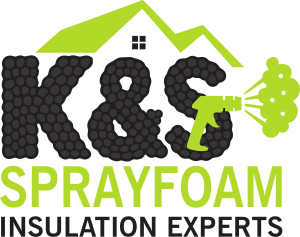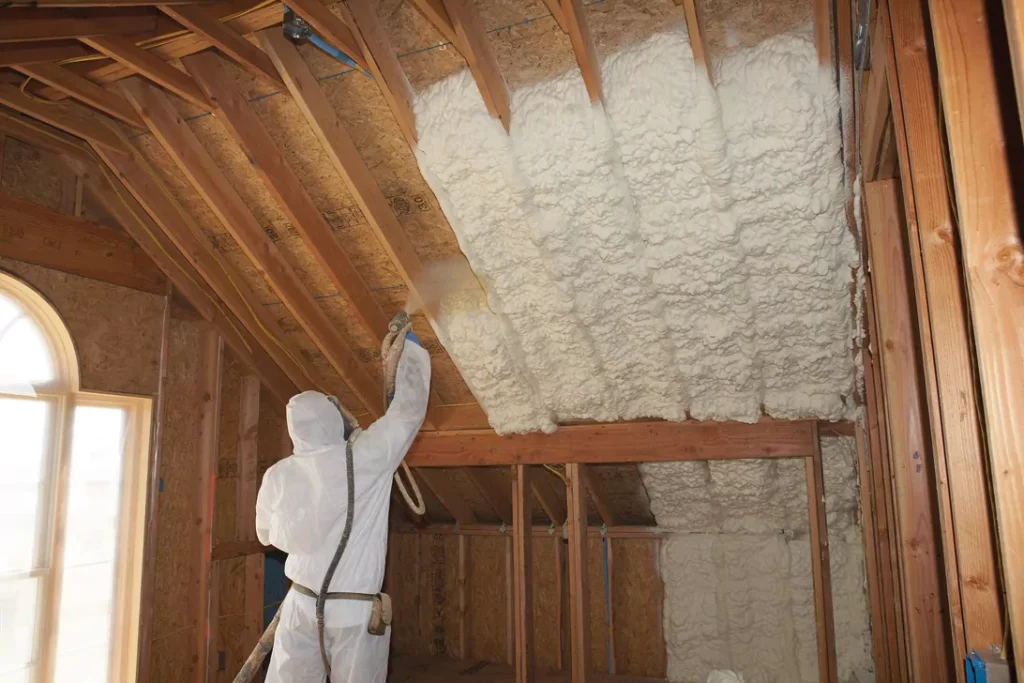Are you looking to improve energy efficiency, cut down on utility bills, and create a more comfortable living or working environment? Choosing the best type of insulation for your house or business is a crucial step. With so many options available, from traditional fiberglass to advanced spray foam, it’s essential to understand the key factors that influence your decision. In this guide, we’ll break down everything you need to know to make an informed choice, tailored to residential homes or commercial spaces.
As insulation experts at KS Spray Foam Insulation, we’ve helped countless homeowners and business owners in the area select the right materials for their needs. Let’s dive in.
Understanding the Importance of Insulation
Before exploring home insulation types or commercial insulation options, it’s vital to grasp why insulation matters. Proper insulation acts as a barrier against heat loss in winter and heat gain in summer, leading to significant energy savings—up to 20-30% on heating and cooling costs, according to the U.S. Department of Energy. It also reduces noise, prevents moisture issues, and enhances indoor air quality.
For businesses, effective insulation can mean lower operational expenses and a more productive workspace. For homes, it translates to year-round comfort. The key is matching the insulation type to your building’s structure, climate, and budget.
Key Factors to Consider When Choosing Insulation
To find the best type of insulation for your house or business, evaluate these essential factors:
-
- R-Value (Thermal Resistance): This measures how well the material resists heat flow. Higher R-values mean better insulation. Aim for R-30 to R-60 in attics, depending on your region.
- Location and Application: Different areas require specific types—attics, walls, floors, or crawl spaces. For example, attics often benefit from Spray Foam, while walls may need batts or Rigid Boards.
- Climate Zone: In colder areas like the Northeast, prioritize high R-value materials. In humid regions, choose moisture-resistant options to avoid mold.
- Budget and Installation Costs: Initial costs vary—fiberglass is affordable, while Spray Foam offers long-term savings despite higher upfront expenses.
- Environmental Impact: Opt for eco-friendly materials like Spray Foam (For effective energy savings) or recycled cellulose if sustainability is a priority.
- Fire Resistance and Safety: Ensure the insulation meets local building codes, especially for commercial properties.
- Professional vs. DIY Installation: Always choose a professional installation.
By assessing these, you’ll narrow down choosing insulation for energy efficiency that fits your needs.
Popular Types of Insulation
Here’s a comparison of the most common insulation materials to help you decide:
| Type | Description | Pros | Best For |
|---|---|---|---|
| Fiberglass | Made from fine glass fibers, available in batts, rolls, or loose-fill. | Affordable, easy to install, non-flammable. | Attics, walls in homes; budget-friendly businesses. |
| Spray Foam | Expands on application; closed-cell (dense) or open-cell (lighter). | High R-value, air-sealing, moisture-resistant. | New construction, hard-to-reach areas in houses or businesses. |
| Blown-In | Recycled paper or fiberglass treated for fire resistance, blown-in. | Eco-friendly, good soundproofing, fills gaps well. | Attics, retrofits in older homes or offices. |
| Rigid Foam Boards | Polystyrene or polyiso panels for exterior or interior use. | High R-value per inch, lightweight, moisture-resistant. | Basements, Walls and roofs in commercial buildings. |
| Mineral Wool (Rock Wool) | Made from rock or slag, in batts or loose-fill. | Fire-resistant, sound-absorbing, mold-resistant. | Fire-prone areas like commercial kitchens or home theaters. |
Spray Foam vs. Fiberglass Insulation: A Quick Comparison
If you’re torn between spray foam vs fiberglass insulation, consider this: Fiberglass is great for simple, cost-effective projects, but spray foam excels in sealing air leaks, making it ideal for energy-efficient upgrades in houses or businesses. For instance, closed-cell spray foam has an R-value of up to 6.9 per inch, compared to fiberglass’s 3.0-4.0.
Steps to Select and Install the Best Insulation
-
- Assess Your Needs: Conduct an energy audit or consult professionals to identify weak spots.
- Research Local Codes: Ensure compliance with building regulations in your area.
- Choose Eco-Friendly Options: If green building is important, look for low-VOC materials.
- Plan for Maintenance: Select durable types that require minimal upkeep.
For businesses in high-traffic areas, prioritize insulation that minimizes downtime during installation, like Spray Foam.
Common Mistakes to Avoid
-
- Underestimating R-Value: Don’t skimp—insufficient insulation leads to higher bills.
-
- Ignoring Moisture Control: In damp climates, avoid absorbent materials without vapor barriers.
-
- DIY Gone Wrong: Complex installations like spray foam can lead to inefficiencies or hazards if not done right. Always choose a professional.
-
- Overlooking Incentives: Check for rebates or tax credits for energy-efficient insulation.
Why Choose KS Spray Foam Insulation Experts?
At KS Spray Foam Insulation Experts, we specialize in high-performance solutions like spray foam for both residential and commercial properties. Our team ensures seamless installation with a focus on choosing insulation for energy efficiency. Contact us today for a free consultation.
Ready to upgrade? The best type of insulation for your house or business is just a decision away. By following this guide, you’ll enjoy lower costs, better comfort, and a smarter investment. Share your experiences in the comments below!




